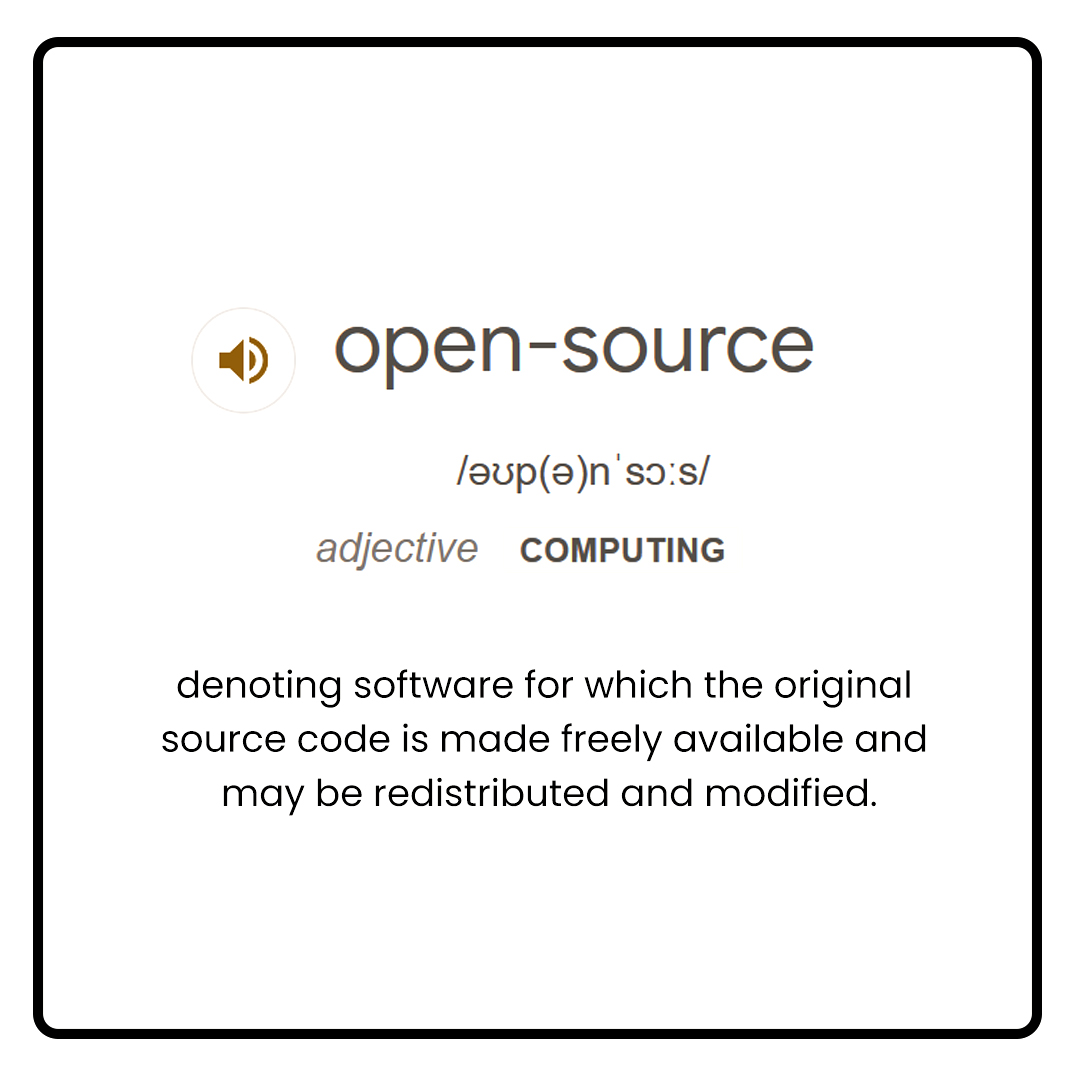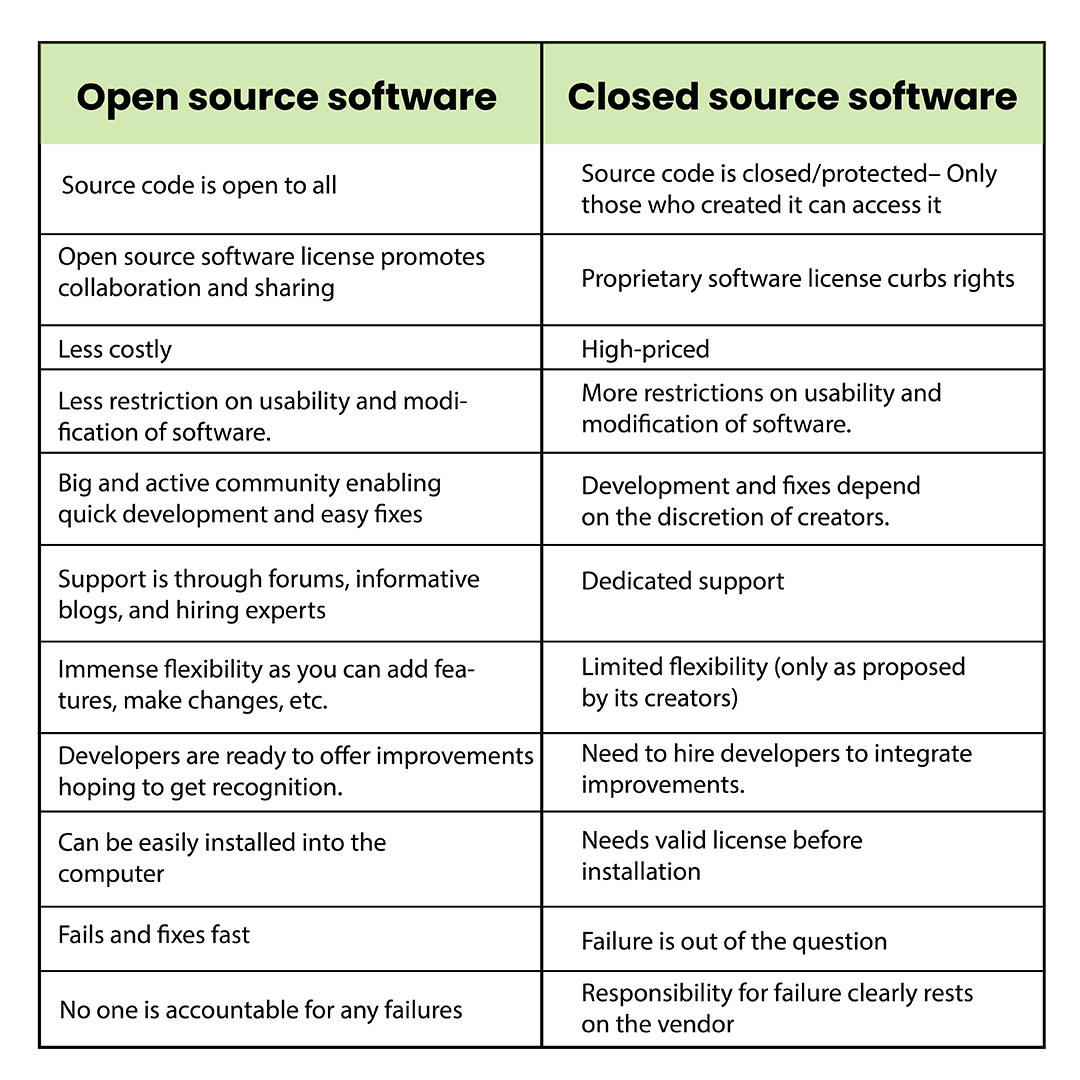What Is Open Source Software? The Definitive Guide
Open source software refers to a type of software whose source code is open to all or freely accessible. The term has been in vogue for the past few decades and software developers adore it thanks to the freedom it gives and the diverse perspectives it permits.
Now, are you wondering what I am talking about? Exploring more about ‘what is open source software’ will clear your doubts. This blog is a humble attempt to throw the much-needed light on the diverse aspects and terminologies related to open source software, open source program, open source tools, open source applications, open source software development services, and so on.
Let’s start with open source meaning and then move on to different related pieces, one at a time.
What is open source software?
The dictionary definition of open source software goes like this: "denoting software for which the original source code is made freely available and may be redistributed and modified."
Source code is the programming statement produced by a programmer which is not often visible to computer users. It is this code that makes applications functioning and enables programmers to influence the behavior of a program.

Though originally associated with the software, open source has become a movement and a way of working beyond software production. To quote Wikipedia’s definition of open source software movement, “The open-source-software movement is a movement that supports the use of open-source licenses for some or all software, a part of the broader notion of open collaboration.”
It stemmed as a sweeping recapture of the copyright law to permit the creation of superior software whose use and development are not restricted. This movement threw open the doors of renewed collaboration between developers and users to build software for their needs. free exchange of programming code is the core theme of this movement which is also known as the Free and Open Source Software (FOSS) movement.
Now, let’s refocus our attention on this bog’s central subject: What is an open source software and everything you need to know about it.
More about open source software
In the case of open source software, the source code is not hidden. The copyright holder of the particular software distributes the software with its source code. They make it freely accessible to other computer programmers to use, modify, or redistribute with its original rights.
Software programmers can access the source code of open source software enabling them to add to it, alter it, or mend it if some programming pieces are not functioning properly. In other words, open source software grants programmers the freedom to integrate diverse perspectives as we mentioned at the beginning of this post. Open source software or open source program permits programmers to transform the software to match their requirements, which is one of its core benefits.
Now, if you’re wondering if making the source code easily available to users is not a big deal, do you know that all the other software does not give the source code publicly available? They are known as closed source software (CSS) or proprietary software and here are the differences between the two.
Open source software vs. Closed source software
With the meaning of open source software clearly discussed in the above section, let’s move on to focus on what is proprietary software. They are closed source software that restricts access to the source code. Only the original authors of the software can legally copy, review, and amend it. Specifically, programmers can’t view or modify the code in any way and hence can’t alter it to suit their unique needs. Whereas, open source software is the exact variance. The authors of open source software make the source code available to others. It helps users to see the code, copy it, learn from it, change it, or even share it.

Some examples of open source software are Firefox, OpenOffice, VCL Media Player, Moodle, Gimp, Alfresco, Android, Zimbra, Thunderbird, MySQL, osCommerce, Mailman, Apache HTTP Server, Moodle, TeX, Samba, Perl, LibreOffice, PHP, KDE etc.
Some examples of closed source software are Skype, Google Earth, Microsoft Office, Apple's iOS, Java, Adobe Flash, Adobe Photoshop, Microsoft Office, Microsoft Windows, WinRAR, Virtual Box, etc.
So, which is better? Open source software or closed source software?
The above self-explanatory table that compares both open source software and closed source software gives you an idea about which is better. Moreover, choosing between the two solely depends on your need and project objectives. Let’s have a quick analysis based on diverse parameters.
Read more: 10 Reasons to Choose Open Source Software for Your Next Project
Collaboration
Open source software boasts a great technology community that is impressively active. As we all know collaboration is the key element that facilitates innovation and improvements. That’s what exactly happens with open source software. For example, a computer programmer in California develops a new application. If it’s an open source application (if he shares it with the public along with granting permission to access source code), another programmer sitting in India can examine and review the application. He can find out new ways to improve it, fix broken links, or enhance original code. This kind of knowledge-sharing benefits the entire community.

Cost
Though often referred to as free software, open source software will involve costs when it comes to getting additional support, added functionality, etc. But the cost is far less when compared to CSS as it’s available for minimal or zero licensing and usage charges.
Closed source software can be expensive as it’s inherently paid software. Based on the scale and complexity of the software prices can go up. It is presumed to be a better product peppered with functionality and innovation.
Flexibility
CSS or proprietary software permits only that much flexibility that is allowed by the creators. Moreover, only front-end flexibility can be expected. Whereas the realm of flexibility is wider in open source software. Programmers can easily modify the code, and thereby the functions and features, to suit diverse organizational needs. How flexible you need your software to be is a major question to be asked before choosing software. Open source software allows you to grow faster.
Service and support
Open source software thrives upon huge developer communities. These loyal user groups and forums offer support as and when required but one drawback is that you may fail to get high-level support which is a highlight of CSS. Proprietary software’s main advantages are service and support thanks to strong FAQ squads, user manuals, and support centers. Users with little technical skills can access support from experts timely and assuredly. Hiring seasoned software developers from leading custom software development companies like Bridge Global can solve support dilemmas on both OSS and CSS effectively.
Security
If security is your prime concern while choosing software, you need to know about this aspect of both types of software. This aspect is a controversial one as a few consider open source software as more secure while others consider side with CSS when it comes to security.
The fact that code is open to users opens up two sides to the security angle in the case of OSS. As the public can view, share, and modify code anytime it means that security issues and bugs can be fixed without any time delay. But it also opens up doors to hackers leading to a grave security concern.
Since OSS is not created and improved upon in a controlled environment it lacks peer review and high-level validation. But this drawback can be tackled by hiring an expert open source development team.

Since developed and nurtured in a controlled environment by a focussed team with a shared direction, proprietary software enjoys more security.
Bottom Line
If you are wondering if open source software is good for your business, here is the answer. An increasing number of businesses and governments are counting on open source software development thanks to its ability to give customized and economical technology solutions. If you are not looking at getting cookie-cutter solutions from closed source software and need inventive software solutions that help you stay distinguished amidst competitive rivals, open source software is your wise choice.
Offshore open source development company like Bridge Global can smartly enhance your open source software competencies by customizing it to suit your unique business needs.


